Jade is one of the most beautiful and valuable precious stones out there. It is extremely popular for jewelry and carvings today and has been for thousands of years. In fact, there is a very famous Chinese proverb about jade that states “there is a price for gold but no price for jade”. There are quite a few different varieties of jade out there which can make determining how much a piece of jade is worth tricky but not impossible (despite what the proverb says)!
The price of jade and why jade is so expensive is a fascinating topic that has several key factors at play. We’ll cover all of these in depth below and provide an easy-to-use method for determining what your jade is worth. We’ll explore the subtle nuances between nephrite and jadeite (the two types of jade) and discuss current market trends that could influence the future value of your piece.
What Jade Is
Jade exists in two distinct mineral forms. Both types have similar characteristics but their individual properties and values are very different:
Nephrite
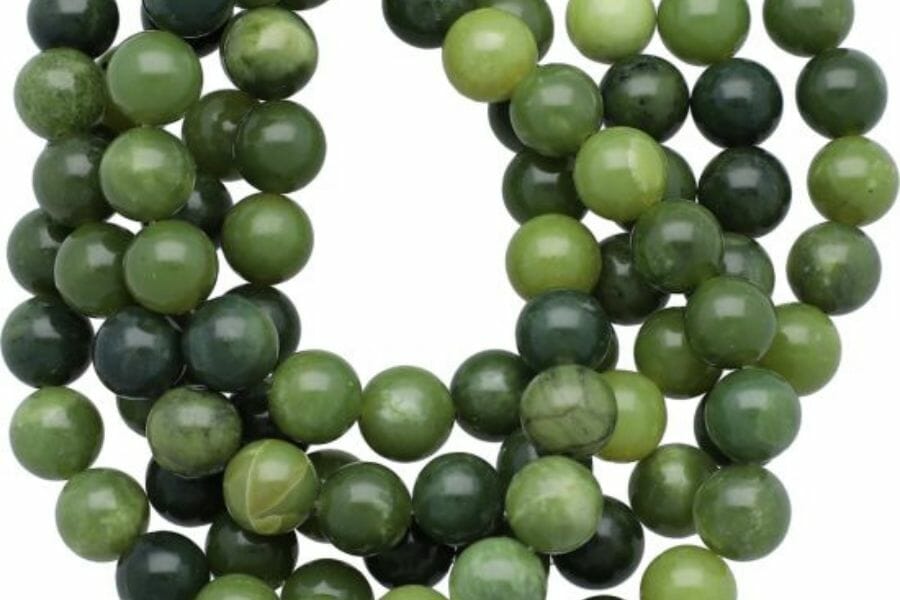
Nephrite, the more ancient and widespread form of jade, is a variety of the calcium and magnesium-rich amphibole mineral, actinolite. It boasts a hardness of 6 to 6.5 on the Mohs scale and can be found in various shades of green, though it also occurs in white, gray, brown, and black hues. Nephrite is renowned for its toughness, making it ideal for carving intricate artifacts and ornamental objects.
Jadeite
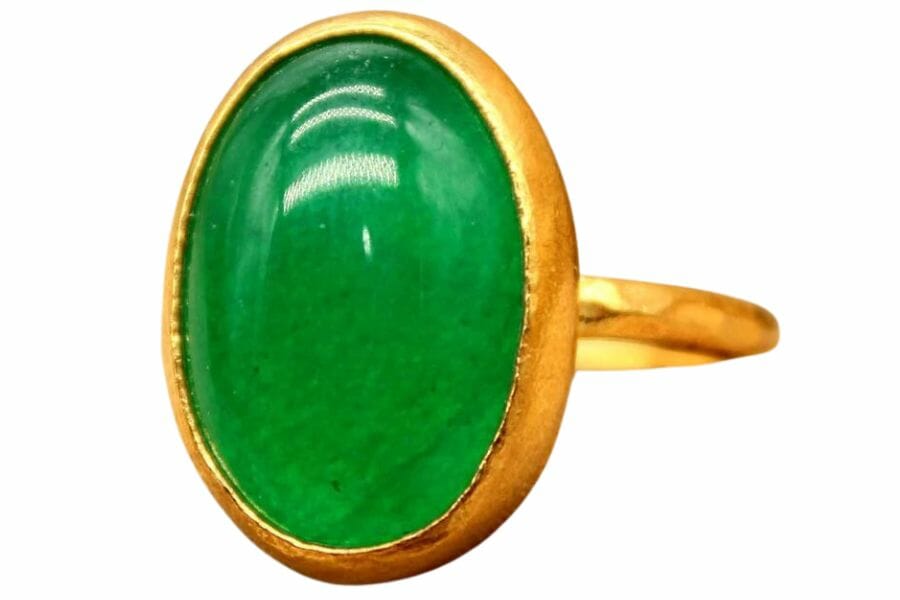
Photo provided by and available for sale at OceanSilverArt
Jadeite, on the other hand, is a sodium and aluminum-rich pyroxene mineral that is rarer and more valuable than nephrite. With a hardness of 6.5 to 7 on the Mohs scale, jadeite exhibits a vibrant range of colors, including the highly coveted Imperial green. Its translucent and lustrous appearance makes it particularly desirable among collectors and connoisseurs.
How to tell nephrite and jadeite apart
Telling these two types apart is not an easy task, even from an expert. Nepthrite tends to be less translucent and less shiny and tends to be a bit softer than jadeite. The easiest way to tell them apart is by the color. Each type has distinct colors that can make them easier to spot. For example:
Jadeite can be:
- White
- Pale green
- Pink
- Lavender
- Dark blue
While Nephrite tends to be:
- Dark to light green
- Black
- White to nearly translucent
- Light yellow “mutton fat jade”
These aren’t the only colors given how many trace elements are found in various types of jade but they tend to be the most common.
Green Jade – What most people think of
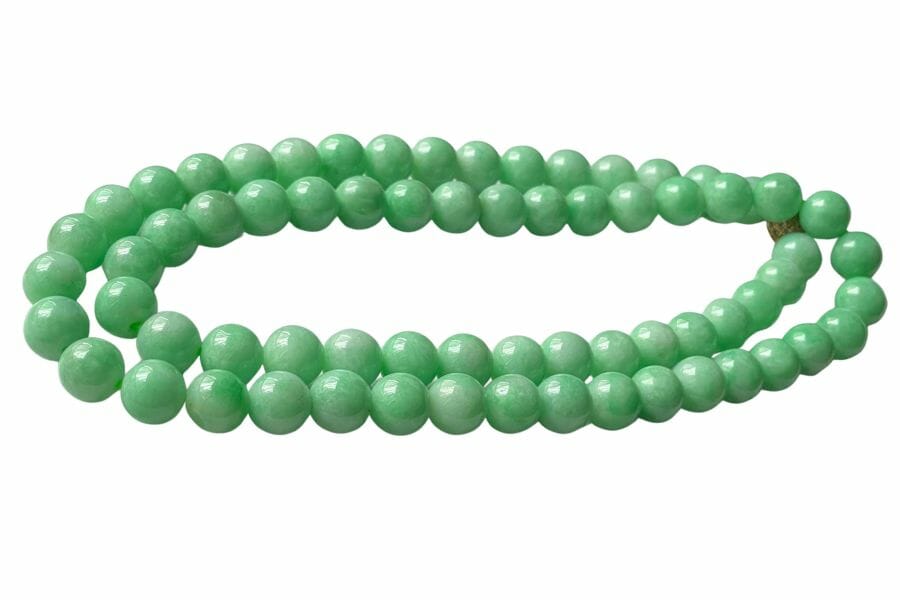
Photo provided by Jadeite Galleria
Green jade has both nephrite and jadeite varieties, each with unique compositions and values. Nephrite, a calcium and magnesium-rich amphibole mineral called actinolite, is the more ancient and widespread form of jade. It exhibits muted, earthy green shades and is renowned for its toughness and durability. Jadeite, a sodium and aluminum-rich pyroxene mineral, is rarer and more valuable. Its vibrant green hues, ranging from translucent “apple green” to the saturated “Imperial green,” are highly sought after.
Green jade is prized for ornamental objects, jewelry, and intricate carvings, with its inherent toughness and durability making it a suitable material for such craftsmanship. In essence, green jade is cherished for its alluring colors, rich cultural associations, and the skilled artistry it inspires, ensuring its timeless appeal.
How much is green jade worth
The process of valuing gemstones can be difficult but we can give you some great pricing guidance. There are several shades of green that have different price points but generally speaking the prices are as follows:
| Color | Location | Price (Per Carat) |
| Imperial green jade | Burma | $350-$550 |
| Imperial green jade | Outside of Burma | $100 |
| Dark green jade | Any | $5-$150 |
White jade
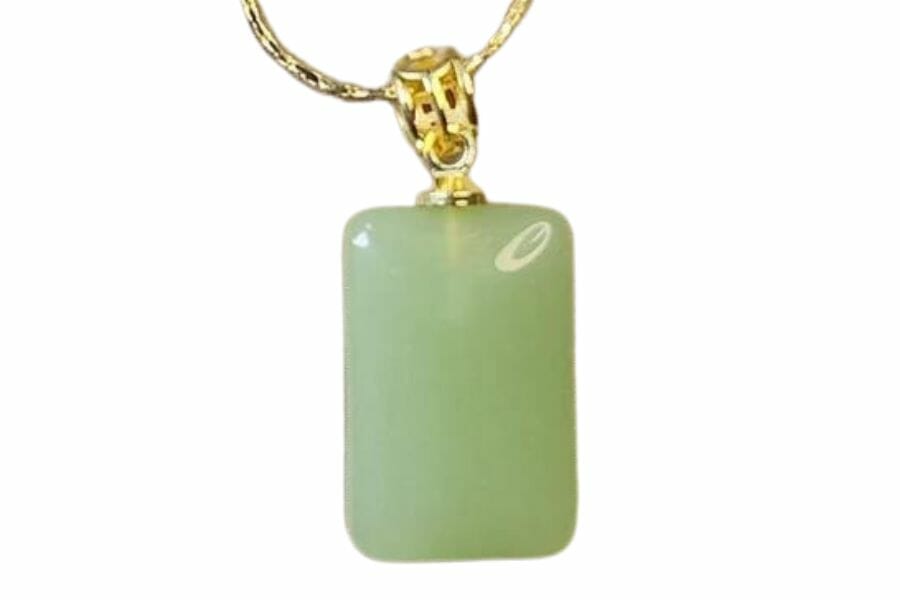
Photo provided by BZKing’s Store
The color of jade, whether it is nephrite or jadeite, is influenced by the presence of trace elements and impurities within its crystal structure. In the case of white jade, the absence of significant amounts of these elements or impurities results in its white or off-white coloration. Both nephrite and jadeite can occur in white shades, although the specific properties and values may differ.
White jade, often associated with purity, clarity, and serenity, has been highly valued in various cultures, particularly in China, where it holds significant historical and cultural importance. The value of white jade is influenced by factors such as its translucency, texture, and overall quality. High-quality white jade should possess a smooth, fine texture and a uniform, pure white color with good translucency.
How much is white jade worth
White jade is one of the more sought-after colors and typically commands a price of $100 to $300 per carat.
Red jade
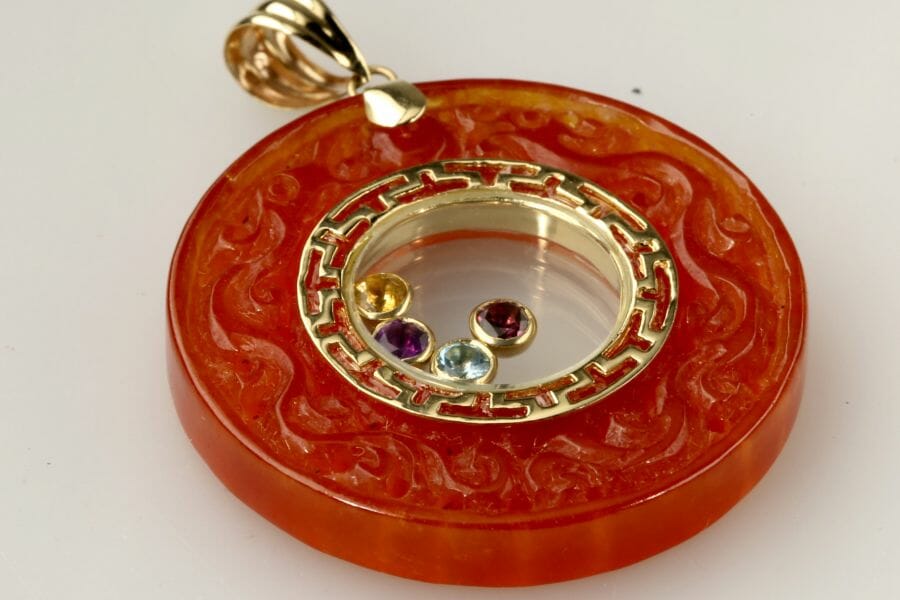
In nephrite, the red hues result from the presence of iron (Fe) in the form of finely dispersed hematite or limonite inclusions. In jadeite, the red coloration is primarily due to the presence of manganese (Mn) or iron (Fe) ions as chromophores. The vibrancy, uniformity, and saturation of the red color contribute to the desirability and value of red jade.
How much is red jade worth
Red jade is not particularly prized and tends to sell for $1 to $15 per carat.
Black jade
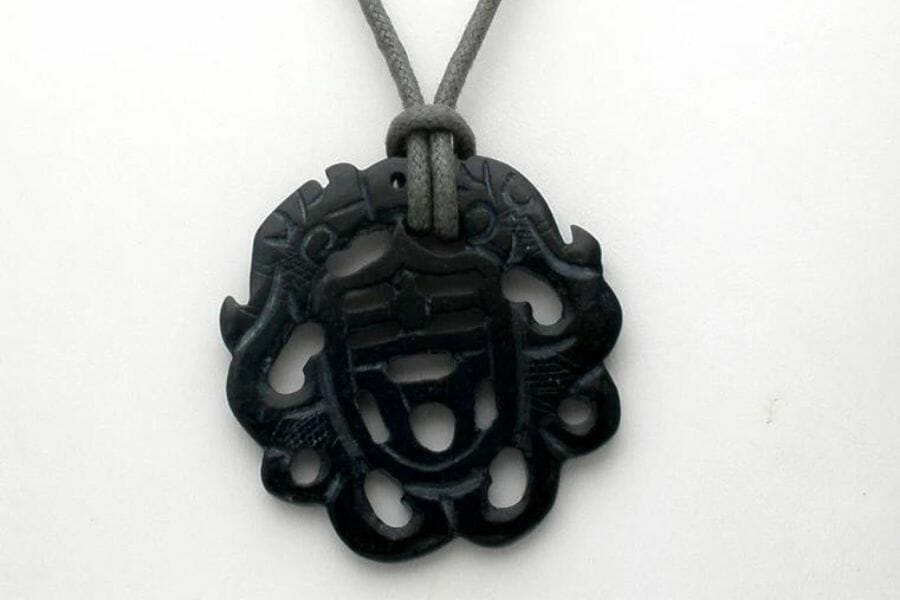
In nephrite, black coloration is primarily due to the presence of high concentrations of iron or graphite inclusions. For black jadeite, the dark hues result from the presence of microscopic inclusions, such as iron-rich minerals. These inclusions or trace elements absorb light, giving the jade its distinctive black appearance.
How much is black jade worth
Black jade has a very big price range since the quality tends to vary widely. You can expect to pay between $1 and $100 per carat.
Purple jade
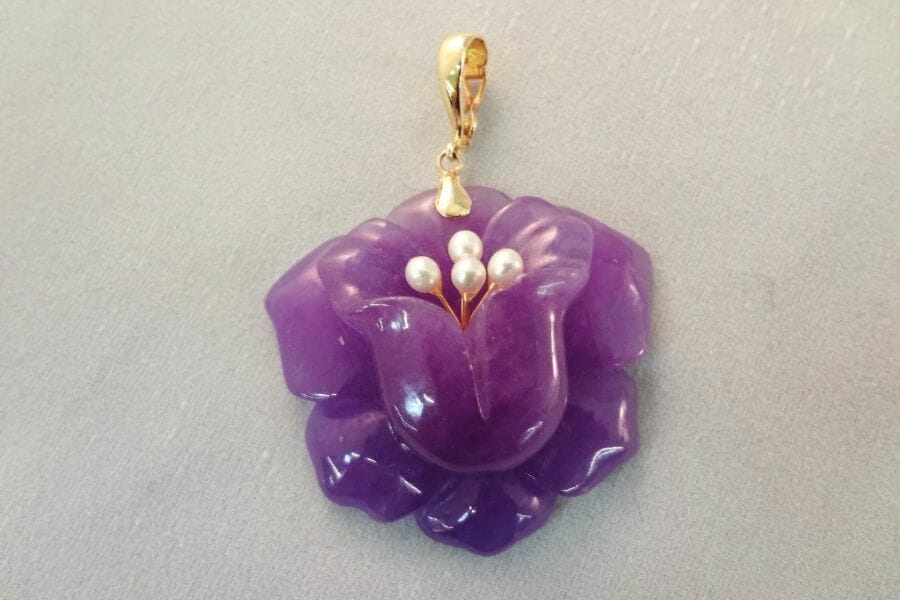
Purple jadeite jade has hues that are primarily due to the presence of manganese (Mn) or iron (Fe) ions as chromophores. In nephrite, purple coloration typically results from the presence of iron or manganese inclusions.
How much is purple jade worth
Purple jade can be highly treasured and can be quite expensive. We have been seeing it sell for between $10 and $300 per carat.
Yellow jade or mutton fat
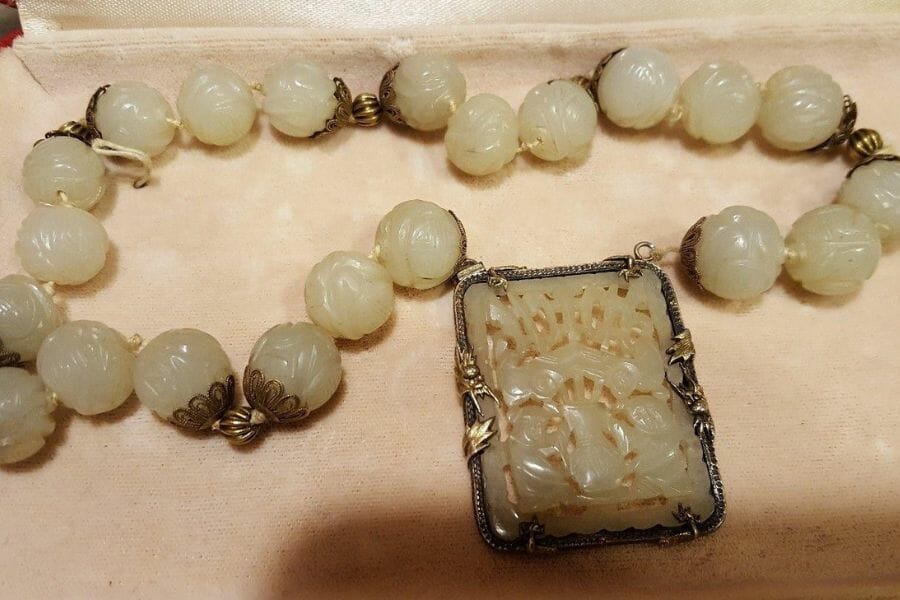
Yellow jade, especially the mutton fat variety, is one of the highest priced colors of jade. In nephrite, yellow hues result from the presence of iron (Fe) in the form of goethite or limonite inclusions. In jadeite, yellow coloration is primarily due to the presence of iron (Fe) ions as chromophores.
How much is yellow jade worth
Yellow jade is usually priced at a low of $10 per carat for darker yellows to $300 per carat for lighter, mutton fat colors.
Blue jade
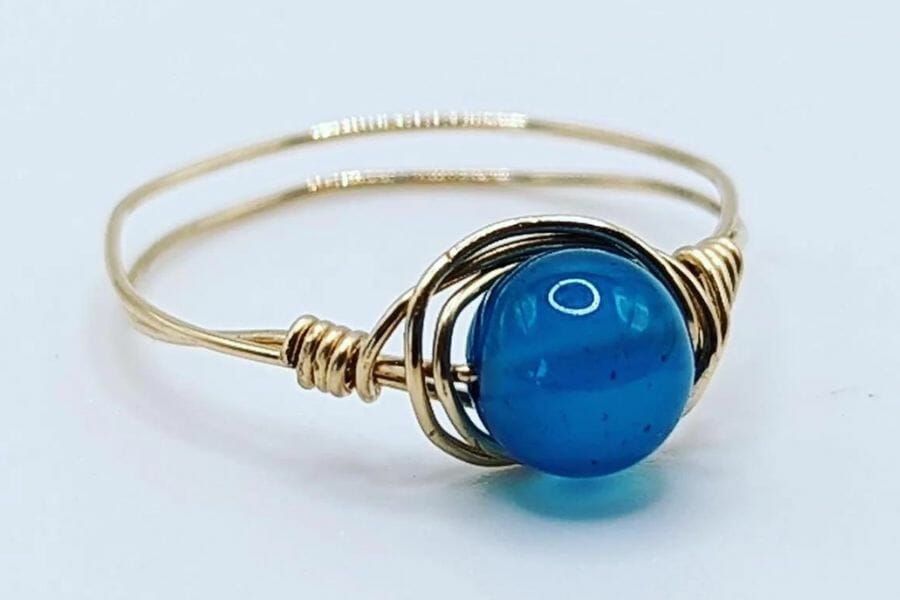
Blue jade can be especially unique and beautiful. With blue nephrite jade, blue hues are typically due to the presence of iron (Fe) or titanium (Ti) inclusions. In jadeite, blue coloration is primarily caused by the presence of titanium (Ti) ions as chromophores.
How much is blue jade worth
The price range for blue jade is usually between $10 and $300 per carat.
Lavender jade
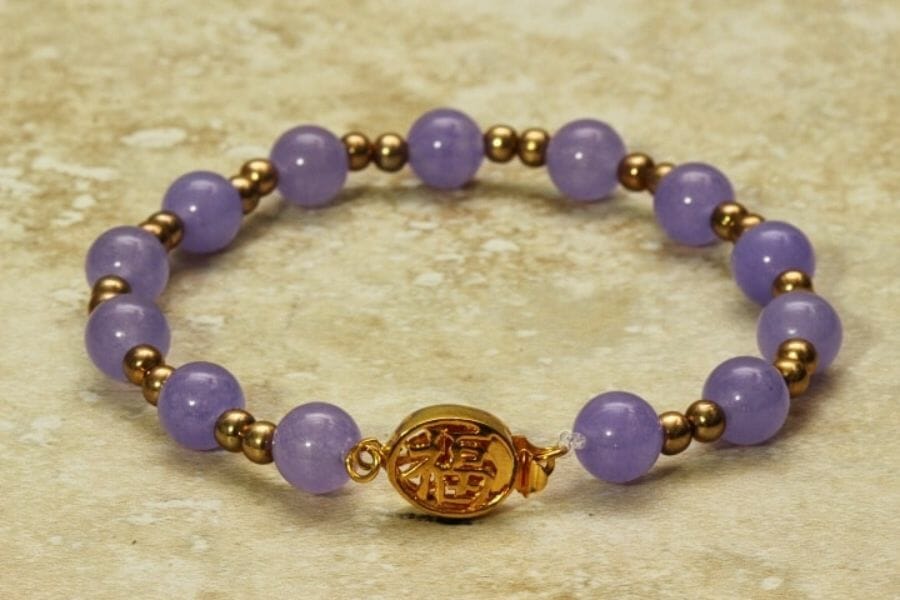
Lavender jade, predominantly found in jadeite, is one of the absolute most expensive colors. The unique lavender hues result primarily from the presence of manganese (Mn) or iron (Fe) ions as chromophores.
How much is lavender jade worth
Buyers can expect to pay between $200 and $1,400 per carat for highly valued lavender jade.
Why Jade Is So Expensive
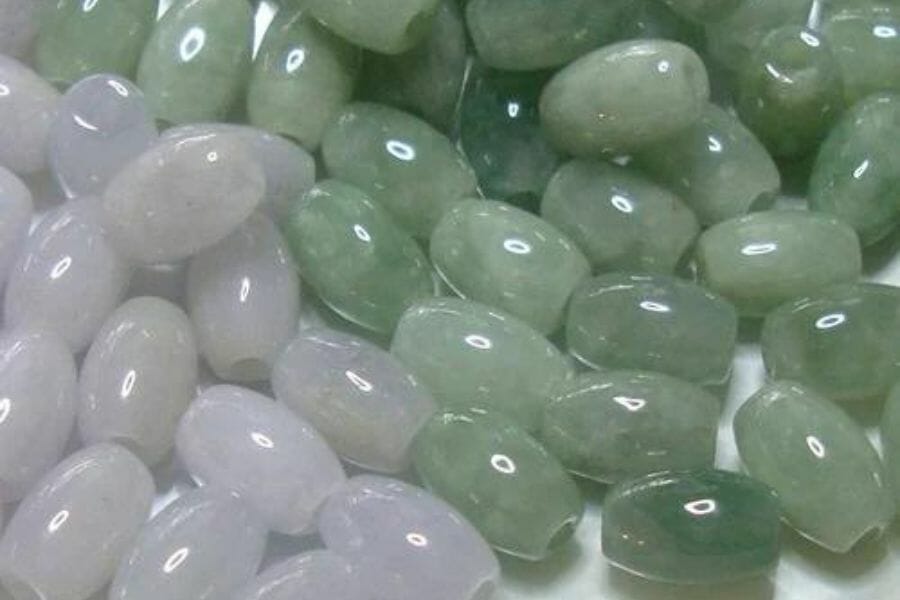
Jade’s allure is rooted in its unique combination of physical beauty, cultural significance, and rarity, which together contribute to price tags that can become pretty substantial. The cultural significance of jade cannot be understated, particularly in China, where it has been revered for over 5,000 years. Esteemed as the “Stone of Heaven,” jade symbolizes purity, grace, and virtue, and is believed to possess protective and healing properties.
Chinese emperors, nobility, and scholars have cherished jade carvings, seals, and ornaments as symbols of status and power, while the common people have worn jade amulets for luck and protection. Beyond China, jade has held immense value in various ancient civilizations, such as the Mesoamerican cultures, which prized the gemstone for its beauty and spiritual significance.
Jade’s rarity, especially in the case of jadeite, adds to its overall worth. High-quality jadeite with a rich, even color and exceptional translucency is scarce, making it highly desirable among collectors and connoisseurs. The limited availability of top-grade jade has led to fierce competition in the market, driving up the prices of these pieces as well.
Moreover, the intricate craftsmanship required to create jade masterpieces adds to the gemstone’s value. Jade’s toughness, while an advantage in terms of durability, presents a unique challenge to carvers, who must possess great skill and patience to create intricate designs and art pieces.
Unsure if what you have is jade? No problem! Our user-friendly guides are here to help you distinguish jade from other rocks and minerals, so you can be certain of your discovery:
How To Determine The Value Of Jade
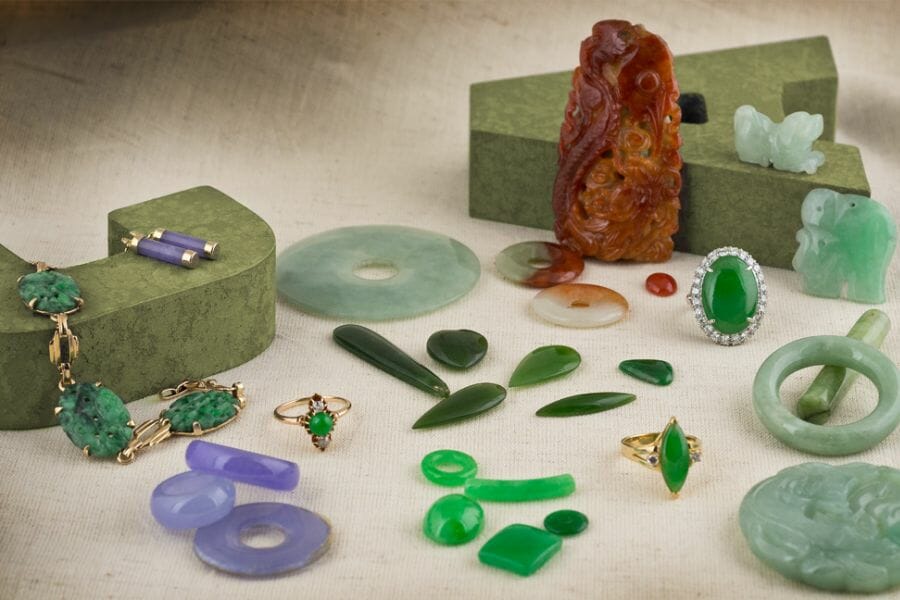
There are a handful of key factors that traditionally determine the price of any particular piece of jade:
Type
As we discussed above, there are two types of jade. Jadeite is rarer and generally is worth more.
Treatment
Jade is unique in that both jadeite and nephrite are commonly treated with chemicals to improve their appearance. This has created four categories of jade treatments all with different price implications:
- Type A – Untreated natural jade that may have a wax coat but no other treatments
- Type B – Jade that has received a bleach and polymer treatment to improve the appearance
- Type C – Jade that has been dyed in some way
- Type B + C – Jade that has been treated with both Type B and Type C treatments
Type A jade is far more valuable than type B, which is far more valuable than type C. Type B + C tends to be the least valuable. It can be difficult to identify jade treatments without spending a little time researching techniques.
Color
The hue, saturation, and evenness of color are crucial factors in determining a jade’s value. The most sought-after jadeite color is a rich, vivid, and evenly distributed Imperial green, while a translucent emerald green known as “apple green” is also highly prized. Nephrite typically exhibits a more muted color palette, but a deep, even green is still considered valuable.
We will give specific pricing guidance further on in the article.
Translucency
The degree of translucency significantly influences the price of jade. Higher translucency is preferred, as it allows light to penetrate the stone, creating a mesmerizing, glowing effect. This is particularly important for jadeite, where a high level of translucency can greatly increase its value.
Texture
A jade’s texture, also referred to as its “grain,” should be fine and smooth, with no visible inclusions or imperfections. A high-quality piece of jade will have a uniform, compact structure that contributes to its overall beauty and durability.
Size and weight
Larger, heavier pieces of jade are generally more valuable due to their rarity and the greater possibilities they offer for carving and design. However, size alone does not dictate value, as a smaller, higher-quality piece may still be worth more than a larger, less desirable specimen.
Carving and craftsmanship
Intricately carved jade items or those that demonstrate exceptional craftsmanship can command higher prices. The skill, creativity, and time invested in producing such pieces add to their overall value and desirability.
Provenance and rarity
The origin of a jade piece can influence its value, particularly if it is associated with a renowned mine or has an interesting history. Additionally, rare or unique jade items, such as those featuring unusual colors or patterns, may fetch higher prices due to their scarcity.
Pieces of jade that have a special history, like being owned by the imperial family in China, are especially valuable.
Jade Price By Color
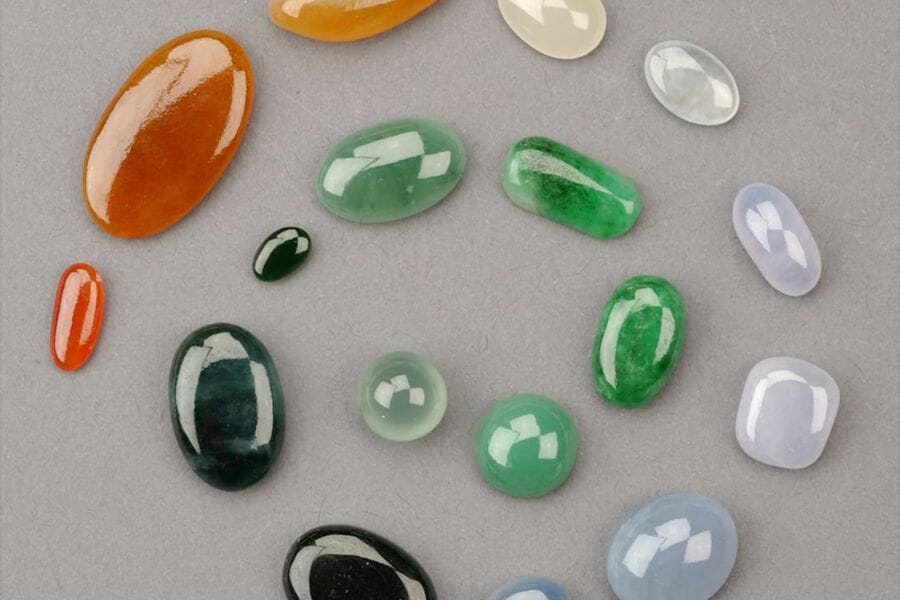
When determining the pricing for jade the easiest way to get a general idea to start with is be first looking at the type, color, and provenance. These are the three largest factors when it comes to estimating the value of most jade.
Below we have included current prices for most colors of jade:
Jade values by color
| Color | Location | Price (Per Carat) |
| Imperial green jade | Burma | $350-$550 |
| Imperial green jade | Outside of Burma | $100 |
| Black jade | Any | $1-$100 |
| Blue jade | Any | $10-$300 |
| Brown jade | Any | $1-$10 |
| Green – Dark | Any | $6-$150 |
| Grey jade | Any | $1-$10 |
| Lavender jade | Any | $200-$1,400 |
| Orange jade | Any | $15-$300 |
| Pink jade | Any | $5-$250 |
| Purple jade | Any | $10-$300 |
| Red jade | Any | $1-$15 |
| White jade | Any | $100-$300 |
| Yellow jade | Any | $10-$300 |
| Yellow – Mutton fat | Any | $250-$300 |
As you can see there is a very wide range in the value and price of jade colors. To have a little fun, lets see how expensive jade is when you measure it in more common units:
Jade pricing by unit of measurement
| Measurement | Price |
| A carat of jade | $1 to $1,400 |
| A gram of jade | $5 to $7,000 |
| An ounce of jade | $140 to $200,000 |
| A kilogram of jade | $5,000 to $7,000,000 |
| A pound of jade | $2,500 to $3,200,000 |
| A ton of jade | $4,500,000 to $6,350,000,000 |
The Most Expensive Jade
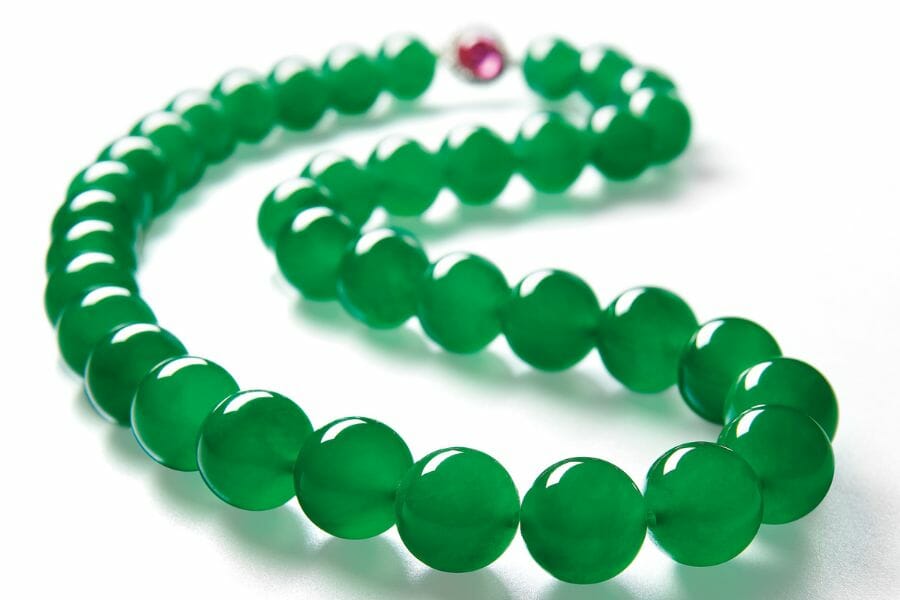
The most expensive jade item ever sold was the Hutton-Mdivani Necklace, which features 27 stunning, highly translucent jadeite beads of a rich emerald green color. The beads have a diameter ranging from 15.40 to 19.20 mm, making it an extraordinary piece due to the consistency in color, quality, and size of the beads. The necklace also has a Cartier-designed clasp, adorned with rubies and diamonds.
In April 2014, the Hutton-Mdivani Necklace was sold at a Sotheby’s auction in Hong Kong for a record-breaking price of HKD 214 million (approximately USD 27.44 million at the time). This sale not only set a new world record for a jadeite jewel but also for any piece of Cartier jewelry. The necklace’s immense value can be attributed to the exceptional quality of its jadeite beads, their historical significance, and the extraordinary craftsmanship of the clasp.
How To Get An Appraisal On Your Jade
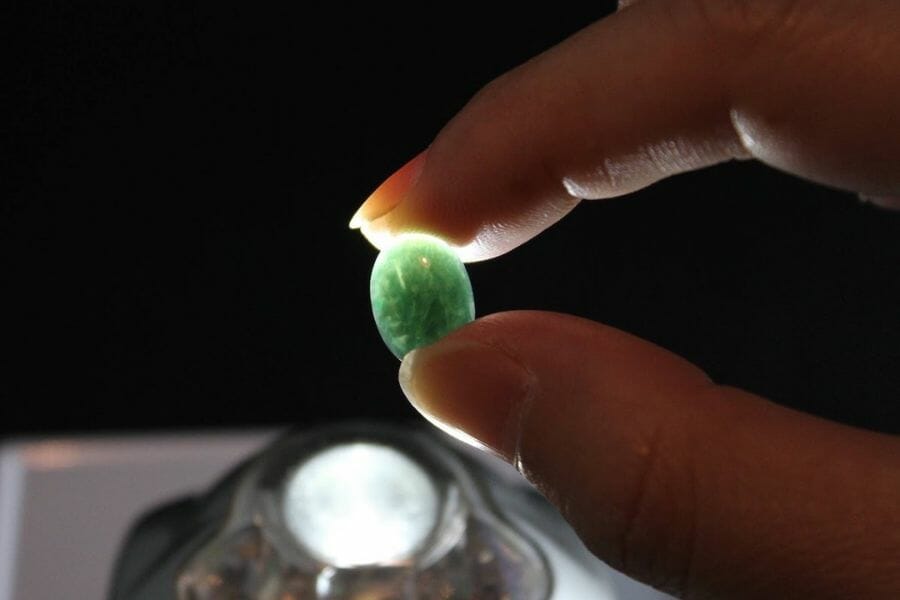
Our guide above will give you a very good idea of the general value and price of your jade. However, if you want to get the best estimate possible it’s worth having a professional appraise your jade. They will be able to spot all of the best aspects as well as flaws with your piece that would be difficult for someone without experience to identify.
The easiest and cheapest way to get an appraisal would be to go to a local jewelry shop that is owner-operated, especially if they are GIA accredited. You don’t want to go to a chain jewelry store. Most self-employed jewelers will have a very good eye when it comes to evaluating a piece of jade and if they don’t they will be able to refer you to someone who does.
Typically they will take a look and give you a pricing estimate for free. If you want a more precise estimate there are many jade dealers that specialize in buying and selling jade that can help.
A third option is local auction houses that sell jewelry. These places often have regular times where you can bring in items you might be interested in selling and get a free appraisal. You don’t have to commit to selling but you might change your mind once you find out how much your jade would sell for!

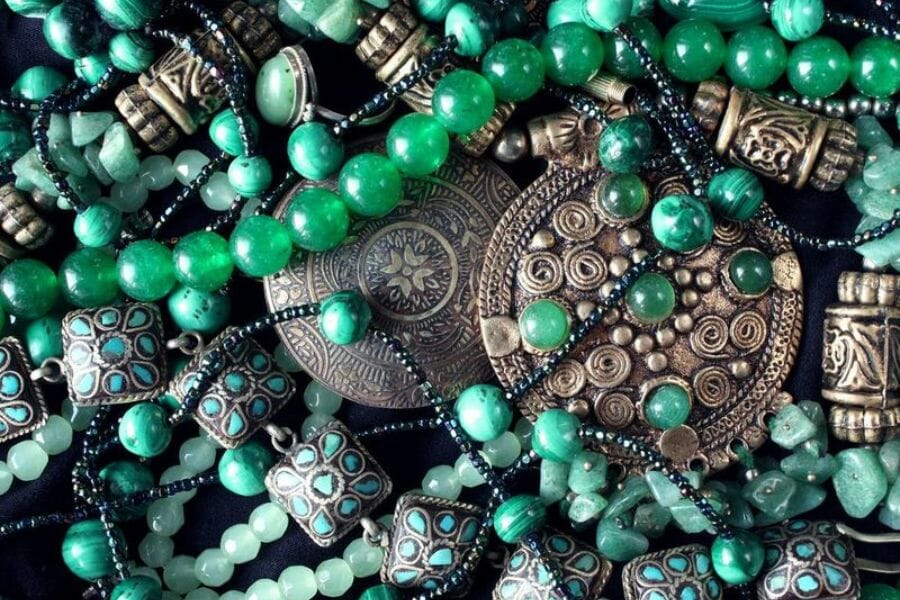

Hello sir,
Good day, thanks for the information about jade stone. I am one of the researchers of the stone here in Mindanao Philippines. I have suspected jade stone collection.Thanks